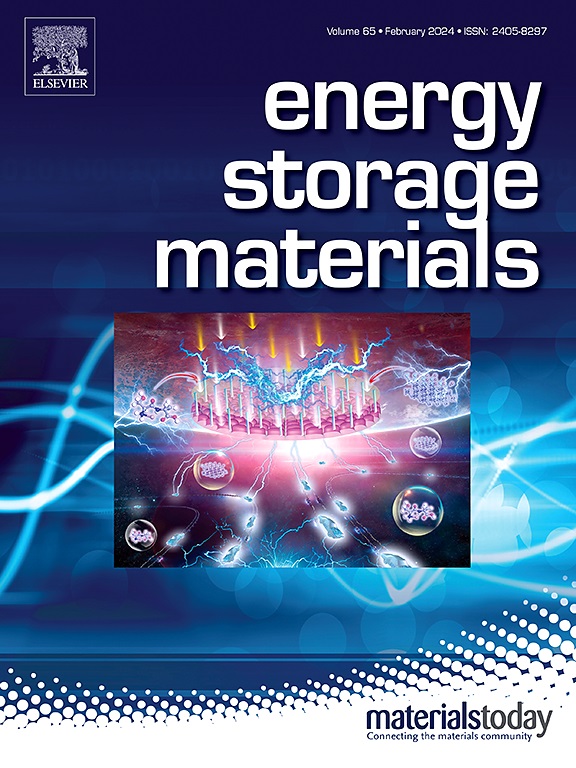A dynamic organic-inorganic bilayer solid/electrolyte interphase employed L-carnosine additive for highly stable zinc metal anode
IF 18.9
1区 材料科学
Q1 CHEMISTRY, PHYSICAL
引用次数: 0
Abstract
The construction of a solid/electrolyte interphase (SEI) is a critical aspect to control the highly stable plating/stripping of Zn metal anode and side reactions for aqueous zinc-ion batteries (AZIBs). Here, we employ l-carnosine (HL), a dipeptide regulating pH in human cells, as an electrolyte additive to construct a dynamic organic-inorganic bilayer SEI to stabilize the Zn anode. The bilayer SEI consists of an amorphous organic inner layer and a ZnCO3-rich crystalline outer layer. The dynamic organic inner layer reduces Zn2+ deposition resistance and promotes uniform Zn2+ flux, thereby mitigating dendrite formation. While the ordered crystalline outer layer effectively isolates water molecules, thereby enhancing the overall mechanical strength and stability of the SEI. As a result, the cycle life of the Zn||Zn symmetric cell exceeds 5500 h at 1 mA cm−2, 1 mAh cm−2, and 1450 h at a high current density of 10 mA cm−2, 10 mAh cm−2. The Zn||NVO full cell also presents a discharge specific capacity of more than 180 mAh g−1 and close to 100% coulomb efficiency (CE) after a stable cycling of 2000 cycles.
l -肌肽添加剂用于高稳定锌金属阳极的动态有机-无机双层固体/电解质界面
固体/电解质界面(SEI)的构建是控制锌金属阳极(azib)高稳定性镀/剥离和副反应的关键方面。在这里,我们使用l -肌肽(HL),一种在人体细胞中调节pH的二肽,作为电解质添加剂来构建动态的有机-无机双分子层SEI来稳定Zn阳极。双层SEI由非晶有机内层和富znco3晶体外层组成。动态有机内层降低了Zn2+沉积阻力,促进了Zn2+通量的均匀,从而减轻了枝晶的形成。而有序的晶体外层则有效地隔离了水分子,从而提高了SEI的整体机械强度和稳定性。结果表明,Zn||对称电池在1ma cm - 2, 1mah cm - 2时的循环寿命超过5500小时,在10ma cm - 2, 10mah cm - 2的高电流密度下的循环寿命超过1450小时。在稳定循环2000次后,Zn||NVO全电池的放电比容量也超过180 mAh g - 1,库仑效率(CE)接近100%。
本文章由计算机程序翻译,如有差异,请以英文原文为准。
求助全文
约1分钟内获得全文
求助全文
来源期刊

Energy Storage Materials
Materials Science-General Materials Science
CiteScore
33.00
自引率
5.90%
发文量
652
审稿时长
27 days
期刊介绍:
Energy Storage Materials is a global interdisciplinary journal dedicated to sharing scientific and technological advancements in materials and devices for advanced energy storage and related energy conversion, such as in metal-O2 batteries. The journal features comprehensive research articles, including full papers and short communications, as well as authoritative feature articles and reviews by leading experts in the field.
Energy Storage Materials covers a wide range of topics, including the synthesis, fabrication, structure, properties, performance, and technological applications of energy storage materials. Additionally, the journal explores strategies, policies, and developments in the field of energy storage materials and devices for sustainable energy.
Published papers are selected based on their scientific and technological significance, their ability to provide valuable new knowledge, and their relevance to the international research community.
 求助内容:
求助内容: 应助结果提醒方式:
应助结果提醒方式:


